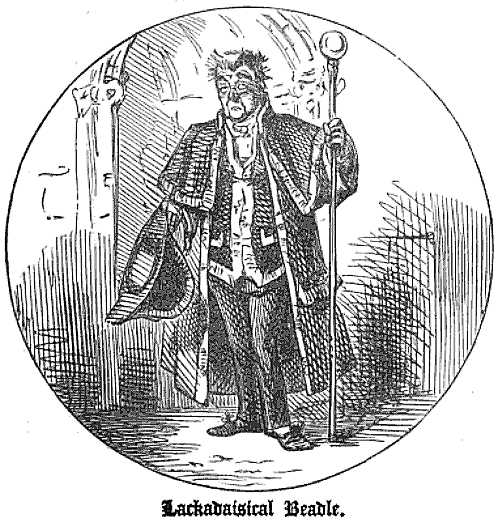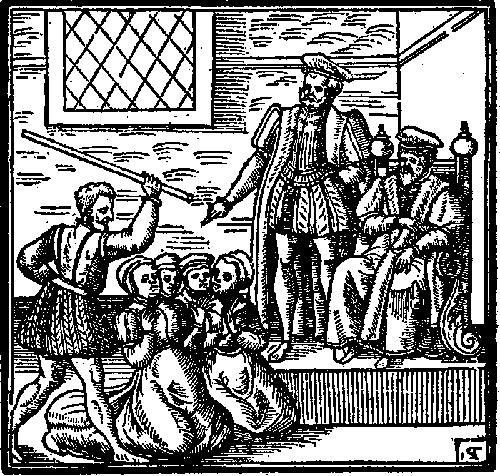|
Bessie Wright
Bessie Wright (recorded 1611–1628) was a healer in Perthshire who was accused of witchcraft in 1611, 1626 and then again in 1628. Not a lot is known about Bessie Wright's early life, but she was recorded as a healer in Scone, Scotland, Scone parish, Perthshire by 1611. Famed as a healer, Wright was unusual in the area for having a 'medical book' which she claimed was over 1,000 years old and had been used by her father and grandfather. While Wright claimed to be unable to read the book, her son Adam Bell read out extracts to her. The Church of Scotland was unhappy with Wright's access to this book and in 1611, William Cowper, minister of Perth, demanded that she hand it over to the Church. When Wright came into contact with the authorities again in 1626, she mentioned that her book had been taken by Cowper or Archibald Steedman, the beadle. Wright continued as a healer until 1626 when she was investigated by the Church for using unacceptable healing practices in Scone and told to ... [...More Info...] [...Related Items...] OR: [Wikipedia] [Google] [Baidu] |
Perthshire
Perthshire (locally: ; gd, Siorrachd Pheairt), officially the County of Perth, is a historic county and registration county in central Scotland. Geographically it extends from Strathmore in the east, to the Pass of Drumochter in the north, Rannoch Moor and Ben Lui in the west, and Aberfoyle in the south; it borders the counties of Inverness-shire and Aberdeenshire to the north, Angus to the east, Fife, Kinross-shire, Clackmannanshire, Stirlingshire and Dunbartonshire to the south and Argyllshire to the west. It was a local government county from 1890 to 1930. Perthshire is known as the "big county", or "the Shire", due to its roundness and status as the fourth largest historic county in Scotland. It has a wide variety of landscapes, from the rich agricultural straths in the east, to the high mountains of the southern Highlands. Administrative history Perthshire was an administrative county between 1890 and 1975, governed by a county council. Initially, Perthshire Count ... [...More Info...] [...Related Items...] OR: [Wikipedia] [Google] [Baidu] |
Scone, Scotland
Scone (; gd, Sgàin; sco, Scuin) is a town in Perth and Kinross, Scotland. The medieval town of Scone, which grew up around the monastery and royal residence, was abandoned in the early 19th century when the residents were removed and a new palace was built on the site by the Earl of Mansfield. Hence the modern village of Scone, and the medieval village of Old Scone, can often be distinguished. Both sites lie in the historical province of Gowrie, as well as the old county of Perthshire. Old Scone was the historic capital of the Kingdom of Scotland. In the Middle Ages it was an important royal centre, used as a royal residence and as the coronation site of the kingdom's monarchs. Around the royal site grew the town of Perth and the Abbey of Scone. Scone and Scotland Scone's association with kings and king-making gave it various epithets in Gaelic poetry; for instance, ''Scoine sciath-airde'', "Scone of the High Shields", and ', "Scone of the Noisy Shields". Scotland its ... [...More Info...] [...Related Items...] OR: [Wikipedia] [Google] [Baidu] |
Church Of Scotland
The Church of Scotland ( sco, The Kirk o Scotland; gd, Eaglais na h-Alba) is the national church in Scotland. The Church of Scotland was principally shaped by John Knox, in the Scottish Reformation, Reformation of 1560, when it split from the Catholic Church and established itself as a church in the reformed tradition. The church is Calvinist Presbyterian, having no head of faith or leadership group and believing that God invited the church's adherents to worship Jesus. The annual meeting of its general assembly is chaired by the Moderator of the General Assembly of the Church of Scotland. The Church of Scotland celebrates two sacraments, Baptism and the Lord's Supper in Reformed theology, Lord's Supper, as well as five other Rite (Christianity), rites, such as Confirmation and Christian views on marriage, Matrimony. The church adheres to the Bible and the Westminster Confession of Faith, and is a member of the World Communion of Reformed Churches. History Presbyterian tra ... [...More Info...] [...Related Items...] OR: [Wikipedia] [Google] [Baidu] |
Beadle
A beadle, sometimes spelled bedel, is an official of a church or synagogue who may usher, keep order, make reports, and assist in religious functions; or a minor official who carries out various civil, educational, or ceremonial duties on the manor. The term has pre-Conquest origins in Old English, deriving from the Old English ''bydel'' ("herald, messenger from an authority, preacher"), itself deriving from ''beodan'' ("to proclaim", which has a modern descendant in the English verb ''bid''). In Old English it was a title given to an Anglo-Saxon officer who summoned householders to council. It is also known in Medieval Latin as ''bedellus''. The Domesday Book refers to Beadles as ''bedelli'' or undersheriffs of manors. In religion In England, the word came to refer to a parish constable of the Anglican Church, one often charged with duties of charity. A famous fictional constabulary beadle is Mr. Bumble from Charles Dickens's classic novel '' Oliver Twist'', who overs ... [...More Info...] [...Related Items...] OR: [Wikipedia] [Google] [Baidu] |
Agnes Finnie
Agnes Finnie (died 6 March 1645) was an Edinburgh shopkeeper and moneylender who was executed for witchcraft on 6 March 1645. Biography Agnes Finnie, widow of James Roberston, sold consumer goods, such as fish and cakes in Potterrow, Edinburgh. She had a reputation for cursing people in her neighbourhood. She was charged with causing harm to several neighbours, including an attack on her neighbour, James Cochrane. In June 1644, she was arrested on 20 counts of witchcraft and sorcery. She was tried on 20 December 1644 and executed on the Castle Hill of Edinburgh on Thursday, 6 March 1645. Posthumous petition for pardon In 2008, Agnes Finnie's name was one of thousands presented for posthumous pardon to the Scottish Parliament The Scottish Parliament ( gd, Pàrlamaid na h-Alba ; sco, Scots Pairlament) is the devolved, unicameral legislature of Scotland. Located in the Holyrood area of the capital city, Edinburgh, it is frequently referred to by the metonym Holyro ... ... [...More Info...] [...Related Items...] OR: [Wikipedia] [Google] [Baidu] |
Great Scottish Witch Hunt Of 1597
The Great Scottish Witch Hunt of 1597 was a series of nationwide witch trials that took place in the whole of Scotland from March to October 1597. At least 400 people were put on trial for witchcraft and various forms of diabolism during the witch hunt. The exact number of those executed is unknown, but is believed to be about 200. The Great Scottish Witch Hunt of 1597 was the second of five nationwide witch hunts in Scottish history, the others being The Great Scottish Witch Hunt of 1590–91, The Great Scottish Witch Hunt of 1628–1631, The Great Scottish witch hunt of 1649–50 and The Great Scottish Witch Hunt of 1661–62. History The Great Scottish Witch Hunt of 1597 is the least documented of the five nationwide Scottish witch hunts. As the latter ones, it was conducted by local courts under the supervision of royal commissions, but in contrast to the others, it was not documented by the central authorities, and the local records are often missing. It is not known what ca ... [...More Info...] [...Related Items...] OR: [Wikipedia] [Google] [Baidu] |
Witchcraft
Witchcraft traditionally means the use of magic or supernatural powers to harm others. A practitioner is a witch. In medieval and early modern Europe, where the term originated, accused witches were usually women who were believed to have used malevolent magic against their own community, and often to have communed with evil beings. It was thought witchcraft could be thwarted by protective magic or counter-magic, which could be provided by cunning folk or folk healers. Suspected witches were also intimidated, banished, attacked or killed. Often they would be formally prosecuted and punished, if found guilty or simply believed to be guilty. European witch-hunts and witch trials in the early modern period led to tens of thousands of executions. In some regions, many of those accused of witchcraft were folk healers or midwives. European belief in witchcraft gradually dwindled during and after the Age of Enlightenment. Contemporary cultures that believe in magic and the superna ... [...More Info...] [...Related Items...] OR: [Wikipedia] [Google] [Baidu] |
17th-century Scottish Women
The 17th century lasted from January 1, 1601 ( MDCI), to December 31, 1700 ( MDCC). It falls into the early modern period of Europe and in that continent (whose impact on the world was increasing) was characterized by the Baroque cultural movement, the latter part of the Spanish Golden Age, the Dutch Golden Age, the French ''Grand Siècle'' dominated by Louis XIV, the Scientific Revolution, the world's first public company and megacorporation known as the Dutch East India Company, and according to some historians, the General Crisis. From the mid-17th century, European politics were increasingly dominated by the Kingdom of France of Louis XIV, where royal power was solidified domestically in the civil war of the Fronde. The semi-feudal territorial French nobility was weakened and subjugated to the power of an absolute monarchy through the reinvention of the Palace of Versailles from a hunting lodge to a gilded prison, in which a greatly expanded royal court could be more easily k ... [...More Info...] [...Related Items...] OR: [Wikipedia] [Google] [Baidu] |
People Convicted Of Witchcraft
A person ( : people) is a being that has certain capacities or attributes such as reason, morality, consciousness or self-consciousness, and being a part of a culturally established form of social relations such as kinship, ownership of property, or legal responsibility. The defining features of personhood and, consequently, what makes a person count as a person, differ widely among cultures and contexts. In addition to the question of personhood, of what makes a being count as a person to begin with, there are further questions about personal identity and self: both about what makes any particular person that particular person instead of another, and about what makes a person at one time the same person as they were or will be at another time despite any intervening changes. The plural form "people" is often used to refer to an entire nation or ethnic group (as in "a people"), and this was the original meaning of the word; it subsequently acquired its use as a plural form of per ... [...More Info...] [...Related Items...] OR: [Wikipedia] [Google] [Baidu] |
Witch Trials In Scotland
In early modern Scotland, inbetween the early 16th century and the mid-18th century, judicial proceedings concerned with the crimes of witchcraft ( gd, buidseachd) took place as part of a series of witch trials in Early Modern Europe. In the late middle age there were a handful of prosecutions for harm done through witchcraft, but the passing of the Witchcraft Act 1563 made witchcraft, or consulting with witches, capital crimes. The first major issue of trials under the new act were the North Berwick witch trials, beginning in 1590, in which King James VI played a major part as "victim" and investigator. He became interested in witchcraft and published a defence of witch-hunting in the ''Daemonologie'' in 1597, but he appears to have become increasingly sceptical and eventually took steps to limit prosecutions. An estimated 4,000 to 6,000 people, mostly from the Scottish Lowlands, were tried for witchcraft in this period, a much higher rate than for neighbouring England. There w ... [...More Info...] [...Related Items...] OR: [Wikipedia] [Google] [Baidu] |





_1938.jpg)
